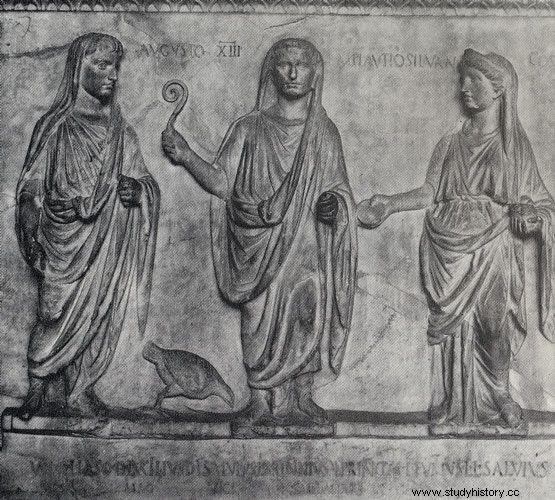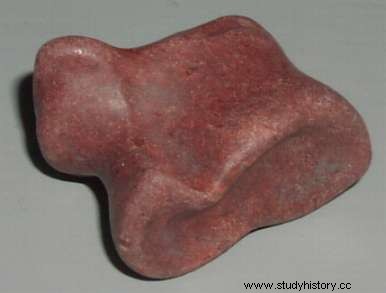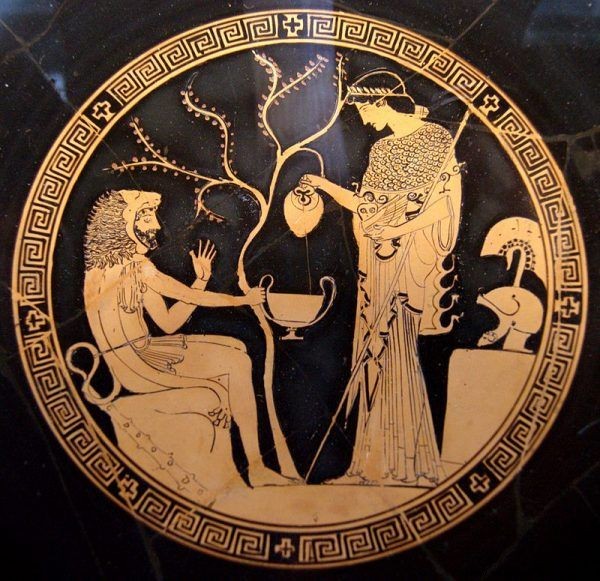From time immemorial, mankind has always wanted to know its future. It was supposed to help in making important decisions concerning the entire country, but also the gray day of an ordinary mortal. Being able to look beyond the edge of the next day and find out - what happened tomorrow. A dream as old as the world and it is difficult to predict if it will ever come true.
In order to predict the future, people and objects, the guts of animals, the flight of birds and the hand were used. Even in the cheese crumbs and the water dripping through the sieve, the future was seen. The author of the only ancient dream book preserved to our times, living in the 2nd century CE Artemidor of Daldis, encouraged the use of soothsayers. However, he warned against frauds who, preying on human credulity, deceive and take the last pennies from customers. He also pointed out that only specialists in this field can be trusted, such as fortune-tellers, augurs, astrologers and onejrokritty. This enormous popularity of all kinds of fortune-telling and people looking into the future continues undisturbed to this day.
The bones will tell you the truth ...
Artemidor also mentioned divination from dice among the questionable quality of the means of prophecy. However, despite such warnings, it was bone prophecy that enjoyed great popularity in ancient times. Astragals, as those bones were called, were cut from the hind legs of goats, sheep or pigs. Sometimes they were wooden, metal or made of precious stones. The bones of ancient times were definitely different from those used today, as they had only four sides - two longer and two shorter. One of the latter was convex and was called pranes, while the other was hyptios and was concave. The longer sides are the koos and the concave chios opposite. There were numbers on each wall, and so:na pranes - 4, hyptios - 3, koos - 6 and chios - 1.

Octavian Augustus as augur
To get a fortune telling, you had to roll the dice five times and add the numbers rolled up. In this way, it was possible to obtain 56 number combinations, and their results were read from a special table. Interestingly, no specialized fortune-teller was needed to read the astragalus (perhaps hence the criticism from Artemidor). Simply, anyone in need of knowing what awaits him in the future could predict it for himself.
A basic knowledge of… mathematics was enough. To make such divination even more accessible to everyone, there were probably tables with already prepared astragals under the columns.
To this day, twenty tablets of oracles from Phrygia, Pamphlia, Pisidia and Lycia in Asia Minor were known. They were placed on high columns placed in the central points of the cities - so that they could be easily used. For example, a column preserved in Kremna in central Pisidia was located in the western part of the agora, while the entrance to the city's main square was on the opposite side. In this way, everyone who entered the market would face the oracle column almost face to face. The predictions on the boards were always the same - the first line contained numbers and possible results of dice rolls.

Astragal
Although theoretically it was a blind fate, I think so just in case each number combination was also assigned a guardian deity . Then the text of the oracle was given. And they were extremely interesting. On the board from Kremna, next to the throw dedicated to Aphrodite, the fortune-teller could read:Go wherever you want, you will happily get home. Finding and doing the things you intended in your heart. But ask Aphrodite and the son of Maya (that is, Hermes, the patron of omens for the people, as opposed to the omens of the upper sphere, which was patronized by Apollo). As you can see, the happy times were when the thirteen did not yet have a black legend behind them, and even predicted success. However, if it was not so rosy, on the same plaque you can also find such an entry:30, projection of Hermes Tetragonos. Don't go where you are going, it is better for you to wait because I can see your enemy.
Not only bones
Numerical oracles were not the only ones used in the ancient world. Today, twelve alphabetical oracles are also known from the 2nd-3rd century AD They were placed, similarly to numerical oracles, in generally accessible places. So we meet them at city gates, in temple districts, or at cemeteries.
In the case of alphabetic oracles the prediction was obtained after throwing five astragals and adding the randomly drawn numbers. In this way, 24 combinations of numbers were obtained - as many as there are letters in the Greek alphabet. On the tablets with the oracle, the corresponding number and the prophecy were written next to the next letter. And so, the petitioner, eager to know about the future, could learn, for example, that:You will achieve what you are going to achieve, so god says, but also: You cannot harvest without sowing (a bit of ours without work there are no cakes?).

Interestingly, each number combination had a guardian deity assigned
In turn, from the records of a Greek traveler from the 2nd century CE Pausanias, we learn that there was another way to read on the bones. Well, in this case, illustrated astragalos were used. The whole thing, however, was as follows: Here is someone who wants to hear the oracle of god, first prays in front of the statue and after praying, chooses four dice among the others swirling at Heracles' feet and throws them on the table. A picture is made on each cube, the explanation of which is given by the inscription on the plate.
Everyone has always wanted to know what awaits them. Is it worth starting a war, will the business of life pay off, will the journey find its happy epilogue, will the gods favor, or will they turn their gaze away from human fate. Man wanted and wants to look into the future in order to arrange the present under its dictation. So, is it alea iacta est already?
Bibliography:
- Pausanias, Travels in Hellas. In the Temple and in Myth, trans. J. Niemirska-Pliszczyńska, Wrocław 2005.
- Artemidor of Daldis, Meditations on Dreams, trans. I. Żółtowska, Warsaw 1995.
- Benedetto Bravo, Ewa Wipszycka, History of the Ancient Greeks, vol. 3, Warsaw 1992.
- Nicholas G.L. Hammond, The History of Greece, Warsaw 1994.
- Maria Jaczynowska, Religions of the Roman World, Warsaw 1987.
